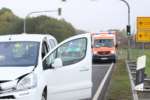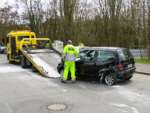With regards to car accidents in parking lots, there’s generally some uplifting news (or maybe some not really terrible news) and some awful news. The not really terrible news is that individuals are normally driving pretty gradually in parking lots, and thus these sorts of car accidents are not frequently such genuine. The awful news is that there are cars going toward each path, and it isn’t in every case clear who has the option to proceed, so making sense of who was to blame for the car accident can be precarious. Right now, offer a few hints on making sense of who may be at risk for a parking lot accident, and why it makes a difference.
Parking Lots and Right-of-Way Rules
In a run of the mill mall or place of the business parking lot, there are various paths with cars left on the two sides, in addition to through paths around the lot’s border, from which vehicles enter the parking paths.
When in doubt, the vehicles in the through paths have the option to proceed, and drivers moving toward them through paths from the parking paths must yield the option to proceed to drivers in the through paths. In this way, if a driver gets out into the path as he is endeavoring to leave a parking path, and slams into a vehicle going in the through the path, the driver leaving the parking path will likely be regarded to blame for the accident. A special case to this general standard applies when the driver of the vehicle in the through path fails to comply with a “STOP” sign that gives the option to proceed to vehicles leaving the parking paths.
Getting In and Out of Parking Spots
Notwithstanding accidents that happen in a parking lot’s through paths and parking paths, crashes likewise ordinarily happen when two vehicles are pulling out of spots on inverse sides of a similar parking path. Right now, it can be hard to decide because, under the legitimate teaching of negligence (which oversees flaw in most car accident cases), the two drivers have an obligation to ensure that it’s sensibly sheltered to once again into the path of movement before doing as such.
At the point when one vehicle has begun to back up, the driver of the vehicle on the contrary side of the parking path should take sensible care to watch the other moving vehicle and hold up before continuing to leave the parking space. In the event that the driver doesn’t do as such and strikes the other moving vehicle, the person will probably be regarded to blame for the accident.
In any case, when it is misty which vehicle started to pull out first, and there is a crash in the parking path, an assurance of flaw is a lot harder to make. Sadly, these cases of “synchronous reinforcement” appear to be the most widely recognized sort of parking path accident, and you ought not to accept you are to blame because you upheld into another vehicle while leaving your parking space.
Importance of Fault
Deficiency conclusions are significant for the drivers associated with parking lot accidents, particularly with regards to whether your car insurance approach will cover harm to the vehicles and any personal wounds that happen. While the issue of whether you are in a “shortcoming” or “no flaw” car insurance state (and how no-deficiency car insurance functions) is past the extent of this article, the issue likely could be a factor in deciding insurance benefits paying little mind to your state’s law.
Consequently, you should be careful what you state at the car accident scene, don’t concede deficiency regardless of whether you believe you’re at fault, above all – and let the insurance organizations sort everything out through their own case examinations.



